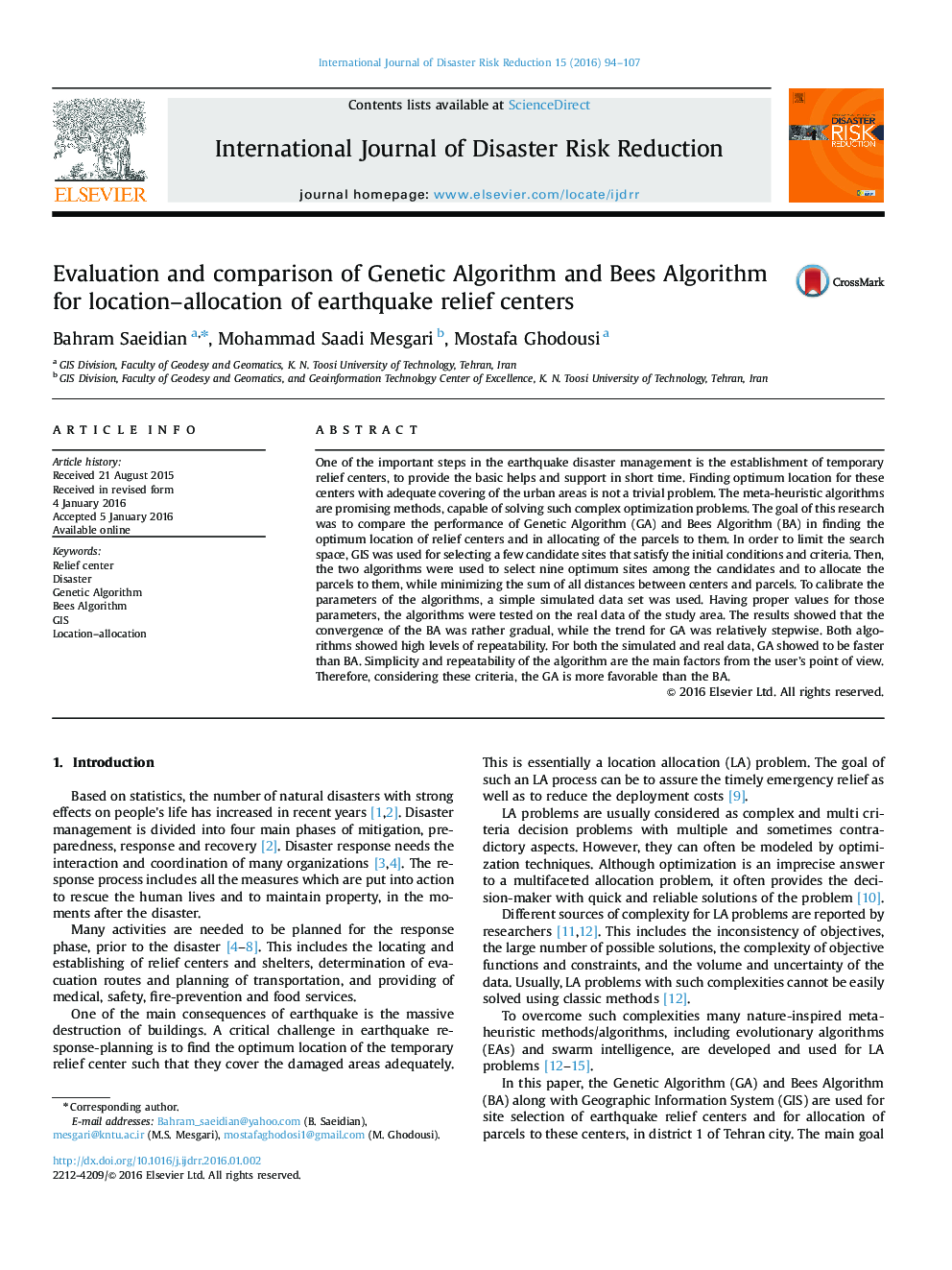| Article ID | Journal | Published Year | Pages | File Type |
|---|---|---|---|---|
| 7472799 | International Journal of Disaster Risk Reduction | 2016 | 14 Pages |
Abstract
One of the important steps in the earthquake disaster management is the establishment of temporary relief centers, to provide the basic helps and support in short time. Finding optimum location for these centers with adequate covering of the urban areas is not a trivial problem. The meta-heuristic algorithms are promising methods, capable of solving such complex optimization problems. The goal of this research was to compare the performance of Genetic Algorithm (GA) and Bees Algorithm (BA) in finding the optimum location of relief centers and in allocating of the parcels to them. In order to limit the search space, GIS was used for selecting a few candidate sites that satisfy the initial conditions and criteria. Then, the two algorithms were used to select nine optimum sites among the candidates and to allocate the parcels to them, while minimizing the sum of all distances between centers and parcels. To calibrate the parameters of the algorithms, a simple simulated data set was used. Having proper values for those parameters, the algorithms were tested on the real data of the study area. The results showed that the convergence of the BA was rather gradual, while the trend for GA was relatively stepwise. Both algorithms showed high levels of repeatability. For both the simulated and real data, GA showed to be faster than BA. Simplicity and repeatability of the algorithm are the main factors from the user's point of view. Therefore, considering these criteria, the GA is more favorable than the BA.
Related Topics
Physical Sciences and Engineering
Earth and Planetary Sciences
Geophysics
Authors
Bahram Saeidian, Mohammad Saadi Mesgari, Mostafa Ghodousi,
